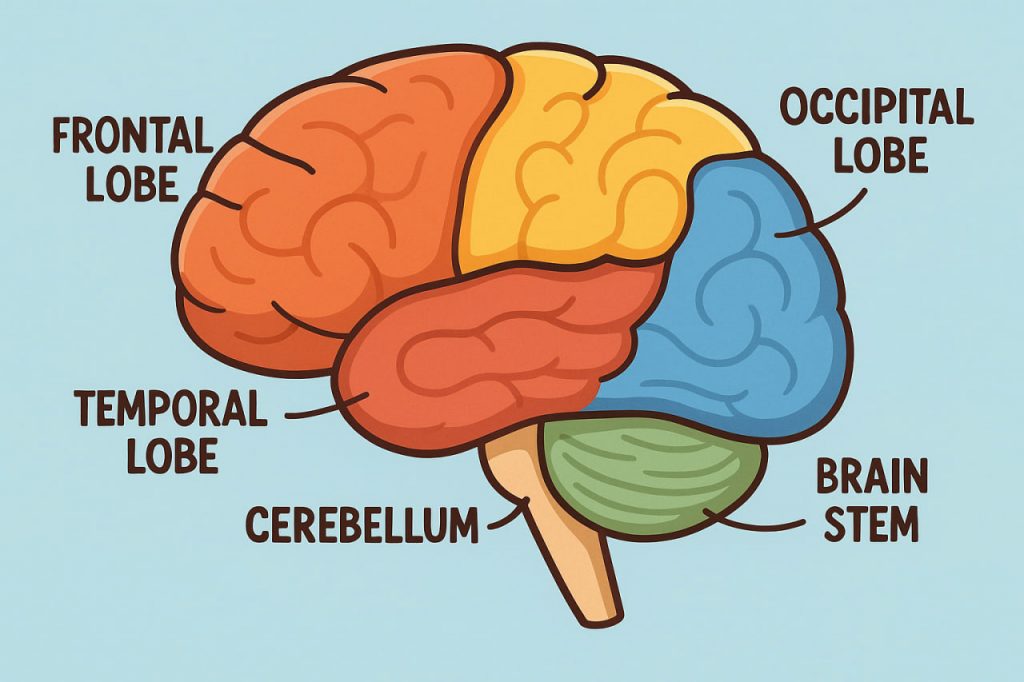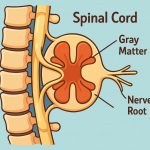The human brain is the most complex organ in the body and one of the most advanced structures known in nature. It controls everything from basic survival functions like breathing and heartbeat to higher-level processes such as reasoning, creativity, and emotions. Understanding its structure and function helps explain how humans think, learn, and adapt to the world.
Main Parts of the Brain
The brain is divided into several key regions, each with specialized functions:
- Cerebrum – the largest part, responsible for thinking, memory, language, and voluntary movement. It is divided into left and right hemispheres.
- Cerebellum – located at the back of the brain, it regulates balance, coordination, and motor control.
- Brainstem – connects the brain to the spinal cord and controls vital processes like breathing, heart rate, and sleep.
Lobes of the Cerebrum
The cerebrum is further divided into lobes, each with unique roles:
- Frontal lobe – decision-making, problem-solving, planning, and voluntary movements.
- Parietal lobe – processes sensory information like touch, pain, and spatial awareness.
- Temporal lobe – handles hearing, memory, and language comprehension.
- Occipital lobe – specialized in visual processing.
Neurons: The Brain’s Building Blocks
The brain contains about 86 billion neurons, specialized cells that transmit information using electrical impulses and chemical signals. Neurons form vast networks that allow communication between different brain areas. Supporting them are glial cells, which protect, nourish, and repair brain tissue.
How the Brain Communicates
Neurons communicate at junctions called synapses, where chemical messengers known as neurotransmitters carry signals. This system allows rapid responses to stimuli and enables learning, memory, and emotional regulation.
The Brain and Plasticity
A remarkable feature of the brain is neuroplasticity—its ability to reorganize and form new connections throughout life. This allows people to learn new skills, recover from injuries, and adapt to changing environments.
The Brain and the Body
The brain works closely with the nervous system and endocrine system. It sends instructions to muscles, regulates organ functions, and releases hormones that influence mood, growth, and metabolism.
Conclusion
The human brain is both delicate and powerful. Its structure—from neurons to large brain regions—creates the foundation of thought, memory, emotions, and survival. Protecting brain health through good nutrition, regular exercise, mental challenges, and rest is essential for maintaining its function over a lifetime.
Glossary
- Neuron – a brain cell that sends and receives signals.
- Synapse – a junction where neurons communicate using neurotransmitters.
- Neuroplasticity – the brain’s ability to reorganize and form new connections.
- Cerebrum – the largest part of the brain, responsible for higher thought functions.
- Cerebellum – the brain region that controls movement coordination and balance.


